“… what they rejected will be most valuable to them.”
Philemon’s words uttered after the sixth sermon to the dead
We have now reached the sixth Sermon to the Dead, which you will find in the third section of The Red Book called Scrutinies. This sermon is worth quoting here in its entirety:
“The daimon of sexuality approaches our soul as a serpent. She
is half human soul and is called thought-desire.
The daimon of spirituality descends into our soul as the
white bird. He is half human soul and is called desire-thought.
The serpent is an earthly soul, half daimonic, a spirit, and
akin to the spirits of the dead. Thus too, like these she swarms
around in the things of earth, making us fear them or else having
them arouse our craving. The serpent has a female nature, forever
seeking the company of those dead who are spellbound by the
earth, and who did not find a way across to singleness. The
serpent is a whore. She courts the devil and evil spirits; she is a
mischievous tyrant and tormentor, forever inveigling the most
evil company: The white bird is a half-celestial soul of man. He
abides with the mother, descending from time to time. The bird
is manlike, and is effective thought. He is chaste and solitary,
a messenger of the mother. He flies high above the earth. He
commands singleness. He brings knowledge from the distant
ones, who have departed before and attained perfection. He
bears our word up to the mother. She intercedes, she warns, but
she is powerless against the Gods. She is a vessel of the sun. The
serpent descends and cunningly lames the phallic daimon, or
else goads him on. She bears up the too-crafty thoughts of the
earthly, those thoughts that creep through every hole and cleave
to all things with craving. Although the serpent does not want to,
she must be of use to us. She flees our grasp, thus showing us the
way, which our human wits could not find.”
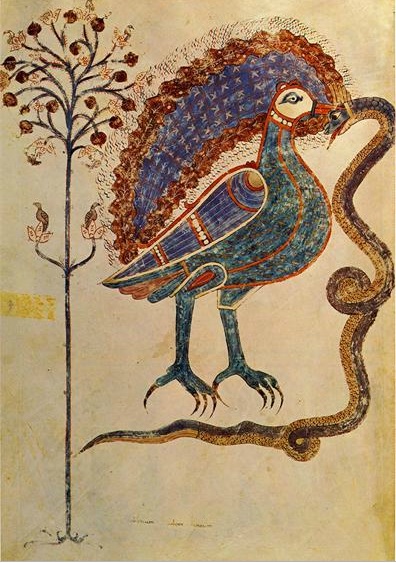
In Ancient Greece and in the Hellenistic period Daimons were believed to be guiding spirits or mediators between the mortal and divine realm. The etymology of the word “daimon” was connected with distributing or allotting destinies to human beings. (1) They were paradoxical beings “never quite divine nor quite human,” “neither spiritual nor physical but both.” (2) There could have been good (agathoi) or evil (kakoi) daimons. The good daimon was often depicted in the form of a serpent. In “The Development of Personality” Jung spoke of the voice of an inner man, which calls us on and endows us with a vocation (Latin vocare – to call). He called this inner man “a private daimon” citing Socrates as a prominent example of a personality who followed the call of his daimon.
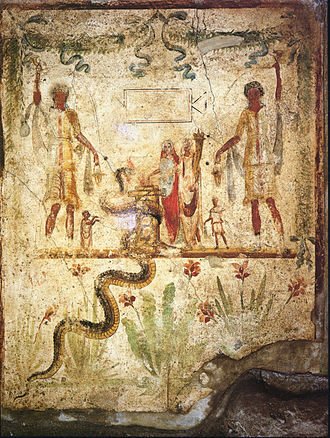
Jung analyzes the symbolism of the snake in Aion (Collected Works 9ii). There he states that the serpent stands for the wisdom of the instincts and it possesses supernatural wisdom. (2) That wisdom is the treasure guarded by the snake. At the same time, the “unrelatedness, coldness, and dangerousness” of the snake is both terrifying and fascinating. The frightening and redeeming wisdom of the snake darts out of the unconscious completely unexpectedly, tearing down the psychological defenses of an individual. In alchemy the serpent symbolism is related to Mercurius and the two winding snakes of his caduceus. As Jung writes in Aion, “the serpens Mercurii is a chthonic spirit who dwells in matter, especially in the bit of original chaos hidden in creation, the massa confusa or globosa.” (3) Alfred Ribi adds this to the symbolic portrait of the serpent:
“The snake, as the presence of spirit in the material, represents, on the one hand, the same fascination it evinces, occasioning all the complications that come of projection. On the other, it stands for the fear of concrete reality, which would lead to full incarnation.” (4)

In the sixth sermon, the serpent takes on a role of “the daimon of sexuality.” She is called “a thought-desire” (German Wunschgedanke). Hoeller explains that the name indicates that “the serpent of sexuality has its main principle of motivation in desire, and that its thoughts are thus ever rooted in desire.” (5)
She seems to also have absorbed some characteristics of the shadow or the evil daimon. She is as seductive as the Indian goddess Maia, weaving her tapestry of projections that entangle an individual in a web of projections. The sermon says that she “goads on” or “lames” the phallic daimon, who is a deity that Jung encountered in a visionary dream as a very young boy. He recalls the dream in Memories, Dreams, Reflections:
“In the dream I was in this meadow. Suddenly I discovered a dark, rectangular, stone-lined hole in the ground. I had never seen it before. I ran forward curiously and peered down into it. Then I saw a stone stairway leading down. Hesitantly and fearfully, I descended.
At the bottom was a doorway with a round arch, closed off by a green curtain. It was a big heavy curtain of worked stuff like brocade, and it looked very sumptuous. Curious to see what might be hidden behind, I pushed it aside.
I saw before me in the dim light a rectangular chamber about thirty feet long. The ceiling was arched and of hewn stone. The floor was laid with flagstones, and in the center a red carpet ran from the entrance to a low platform. On this stood a wonderfully rich golden throne. I am not certain, but perhaps a red cushion lay on its seat.
It was a magnificent throne, a real king’s throne in a fairy tale. Something was standing on it which I thought at first was a tree trunk twelve to fifteen feet high and about one and a half to two feet thick. It was a huge thing, reaching almost to the ceiling. But it was of a curious composition: it was made of skin and naked flesh, and on top there was something like a rounded head with no face and no hair. On the very top of the head was a single eye, gazing motionlessly upward.”

Hoeller says that this underground phallic god was “inwardly feminine” and lay hidden in the “recesses of physical nature and in the instinctual forces of the human psyche itself.” He is the engendering, creative force, the light of nature (lumen naturae), of which Paracelsus wrote:
“Paracelsus, like all the philosophical alchemists, was seeking for something that would give him a hold on the dark, body-bound nature of man, on the soul which, intangibly interwoven with the world and with matter, appeared before itself in the terrifying form of strange, demoniacal figures and seemed to be the secret source of life-shortening diseases. The Church might exorcise demons and banish them, but that only alienated man from his own nature, which, unconscious of itself, had clothed itself in these spectral forms. Not separation of the natures but union of the natures was the goal of alchemy. From the time of Democritus its leitmotiv had been: ‘Nature rejoices in nature, nature conquers nature, nature rules over nature.’ This principle is pagan in feeling and an expression of nature worship. Nature not only contains a process of transformation—it is itself transformation. It strives not for isolation but for union, for the wedding feast followed by death and rebirth. Paracelsus’s ‘exaltation in May’ is this marriage, the ‘gamonymus’ or hierosgamos [a sacred marriage] of light and darkness in the shape of Sol and Luna. Here the opposites unite what the light from above had sternly divided.” (6)
This slithering, serpentine presence permeates all nature, down to its most hidden underground nooks. It is an animating force; one that enlightens the universum of gross matter from within. It makes half of the human soul while the other half belongs to the daimon of spirituality, portrayed in the sermon as the white bird. His name is desire-thought (German Wunschgedanke). That means that his chief impulse is abstract thought, which creates effects in the world. In the previous sermon Philemon spoke of the celestial mother, who resides in the heavens and rules spirituality. It is with her that the white bird lives, descending from time to time to the earth with a message from the mother.
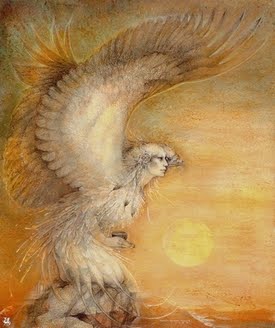
Like the underground phallic god, who has a feminine snakelike soul, also “the celestial bird-woman conceals a masculine core.” (7) We are used to seeing the feminine as earthly and the masculine as celestial but the sixth sermon challenges our preconceived ideas. First of all, as the Chinese doctrine of yin and yang teaches, each quality has an admixture of its opposite. Polarities are engaged in a constant dance, merging into one another in the process known as enantiodromia – the transformation of polarities into their opposites over time.
Hoeller emphasizes that both sides of this polarity were important to Jung. Therefore Jung instructed his family to inscribe the following on his tombstone: “Primus homo de terra terrenus: secundus homo de caelo coelestis” (The first man is of the earth, earthly; the second man is heavenly and from heaven)” from the first letter of Paul to the Corinthians.

As the sermon ends, Philemon stays to talk to Jung. The revelations of the sermon left Jung in awe of Philemon’s enlightening wisdom. Philemon pronounces himself free “from the cycle of births, and from the revolving wheel of endless happening.” The dead, to whom Philemon is preaching, are however still not ready to listen as they keep protesting. They continue to be trapped in between worlds.
Notes:
(1) Cat Rose Neligan, Discovering Your Personal Daimon
(2) par. 370
(3) par. 371
(4) Alfred Ribi, The Search for Roots: C.G. Jung and the Tradition of Gnosis
(5) Stephan A Hoeller, The Gnostic Jung and The Seven Sermons to the Dead
(6) C.G. Jung, Alchemical Studies (CW vol. 13), par. 197
(7) Stephan A Hoeller, The Gnostic Jung and The Seven Sermons to the Dead

Support my blog
If you appreciate my writing, consider donating to support my work. Thank you very much in advance.
$1.00
Reading The Red Book – part 10
Reading The Red Book – part 11
Reading The Red Book – part 12
Reading The Red Book – part 13
Reading The Red Book – part 14
Reading The Red Book – part 15
Reading The Red Book – part 16
Reading The Red Book – part 17
Reading The Red Book – part 18
Reading The Red Book – part 19
Reading The Red Book – part 20
Reading The Red Book – part 21
Reading The Red Book – part 22
Reading The Red Book – part 23
Reading The Red Book – part 24
Reading The Red Book – part 25
Reading The Red Book – part 26
Reading The Red Book – part 27
Reading The Red Book – part 28
Reading The Red Book – part 29
Reading The Red Book – part 30
Reading The Red Book – part 31
Reading The Red Book – part 32
Reading The Red Book – part 33
Reading The Red Book – part 34
Reading The Red Book – part 35
Reading The Red Book – part 36
Reading The Red Book – part 37
Reading The Red Book – part 38
Reading The Red Book – part 39

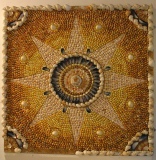




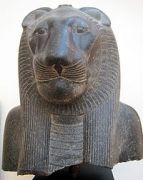




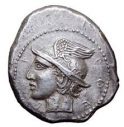
Pingback: Reading The Red Book (13) | symbolreader
The balance of opposites seems to be a theme in creation stories and parables from many cultures and religions/spirituality.
Being so widespread, yet so similar seems to give it more validity.
Thank you for all this fantastic information!!
LikeLiked by 1 person
Thank you. Yes, you are for sure right. The theme of opposites is central for Jung and for all myths and religions. I also love how it is so crucial for Shakespeare.
In gratitude,
Monika
LikeLiked by 1 person